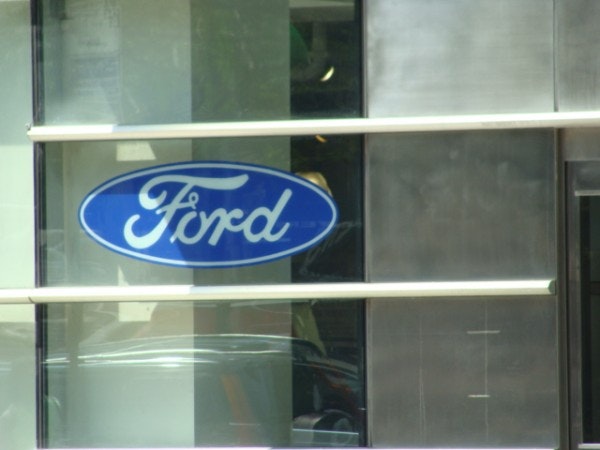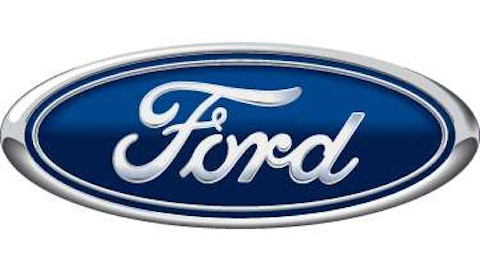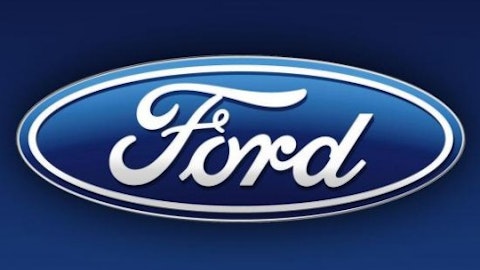Ford Motor Company (NYSE:F) is one of the world’s most famous car manufacturers, competing with companies like Toyota Motor Corporation (ADR) (NYSE:TM) and Honda Motor Co Ltd (ADR) (NYSE:HMC) .
Back in 2008/2009, when the financial crisis hit the world, car manufacturing (along with generally all manufacturing) was hit hard, with many businesses having to move production operations to less-developed and cheaper countries. This is shown with 3.1 million cars being produced in India in 2012 – twice the amount made in the UK. For India, this figure is expected to double by 2015. However, it isn’t all doom and gloom for the UK; figures suggest that output will reach 2 million by 2016. February’s new car market also grew by just under 8%.
Ford Motor Company (NYSE:F) also ended up closing factories in the UK and Europe to cut production costs. It’s believed that they “won’t be profitable until 2015” as they undergo a total restructuring after the crisis of 2008. They’re currently planning to close another factory in Belgium, as European sales remain weak. Staff at this factory protested when this news was released, causing another dent in sales. Europe’s automobile market declined by 11.4%, with Ford’s European sales decreasing by 19%.

It’s also important to highlight that, despite Toyota’s share price being the highest of these three companies, it’s currently having issues with it’s acceleration pedals, meaning it’s having to recall a lot of the cars because of health and safety concerns. Honda also had to recall 250,000 cars due to braking problems and another 777,000 due to problems with the release of the drivers’ airbags. Both of these issues have had an effect on sales and profitability.
As there are different currencies involved with these three companies, I shall provide percentages. For 2011, Ford Motor Company (NYSE:F) made a gross profit of 5% and a net profit of 14.8% – a higher net profit than gross profit, as they had additional income after tax down to restructuring. For every $1 of assets, they hold approximately $0.92 of debt. This is quite critical, as it means they may not have enough assets to pay debts if there are any problems with cash flow. However, this high amount of debt may be down to the restructuring.
Toyota made a 2.47% gross profit and a net profit of 2.15% in 2011. For every $1 of assets they hold, they have $0.63 of debt. That’s quite good, as it means they have more than enough assets to cover their debt if anything went wrong. However, their profit margins are extremely small so if they announced a profit warning, it would definitely affect their share price.
Honda made a 6.38% gross profit in 2011, and a 4.74% net profit. This, too, is similar to Toyota. For every $1 of assets they hold, they have just $0.60 of debt. Again, this is the same as Toyota; they have more than enough assets to cover debts if things go wrong.
There is a lot of information to absorb before making a decision about Ford. Production has been moved from less-profitable and more expensive countries to much cheaper countries that are providing growth. In a global economy where Western manufacturing is no longer viable or profitable, it’s easy to see why companies like the ones mentioned above are moving to more profitable countries. However, this brings added danger, as restructuring is risky.

